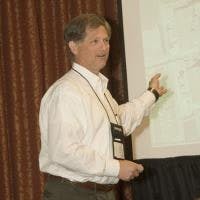New Turbine Trip Scheme Boosts Asset Output
Turbines are among the power industry’s most expensive capital assets, and protecting them from overspeeding is both a critical production and safety concern. Indeed, routine testing of overspeed trip (OST) logic is standard industry practice to ensure that both the turbine and plant personnel remain protected.
Invensys’ Jim Jacoby explained how at the Lower Colorado River Authority’s Fayette plant, new electronic turbine controls have simultaneously increased power production and improved safety.
Until recently at the Lower Colorado River Authority’s Fayette power plant, validating the plant’s mechanical/hydraulic turbine protection circuits consisted of a laborious and time-consuming annual test involving several hours of down-time. Not only did the testing cut into power production, but it also represented an unnecessary risk, according to LCRA’s Scott Matus, who, together with Invensys’ Jim Jacoby, described his company’s recent move to electronic overspeed protection at the 2007 Foxboro User Group meeting this week in Boston. “The highest incident of overspeed conditions is actually during overspeed trip testing,” Jacoby said.
A further goal of replacing the original mechanical/hydraulic protection controls was to eliminate older, original proprietary control components and replace them with standard instrumentation. And because the turbine controls themselves were performed on the Foxboro I/A Series platform, a Tricon controller (from Triconex) was chosen for implementing the new speed detection, tripping functions and hydraulic testing logic. “Diversity of control and safety platforms was something they wanted to maintain,” Jacoby said.
Today, LCRA’s new trip controls consist of a quad-voting set of solenoids that are tested/exercised weekly—while the unit is running—and without the need to run the machine at near destructive speeds. The entire test now takes less than a minute, and requires a single push of a button by the operator. Plus, with more frequent testing, confidence that the trip circuit will respond when needed is higher. Matus further estimated that the project will have paid for itself with the production loss avoided by eliminating only two testing shutdowns.


